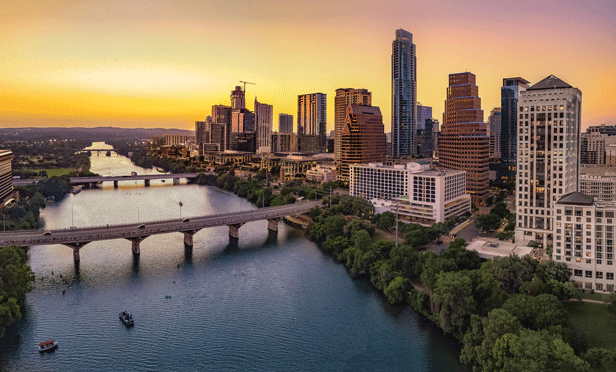WEST ORANGE, NJ-There's really no choice about whether to undertake the $15 billion Gateway Program that will double rail capacity and unstick the service bottleneck between New Jersey and New York City, says Amtrak's chief of development for the project.
“Something has to happen in the Northeast corridor,” Robert LaCroix told a roomful of commercial real estate executives at a NAIOP session at Mayfair Farms here Tuesday. “It is going to happen, because: What are the choices?”
The Gateway Program, begun last year with federal planning funds, will increase track, tunnel, bridge and station capacity and update the current old and over-used infrastructure.
LaCroix spoke of the “human gridlock” that regularly occurs inside Penn Station in New York City during commuter rush hour, drawing knowing winces from the commuters in the crowd. He also said:
- The two existing 100-year-old tunnels between New Jersey and New York today operate at 95-100% capacity during rush hour.
- The existing moveable Portal Bridge over the Hackensack River between Kearny and Secaucus is also 100 years old and “falling apart.”
- Any problem, even minor, on the Newark-to-New York City line can cause hundreds of train delays around the Northeast.
- The aging roads and airway systems are overburned, too, and can't take up slack.
Right now, just to do necessary maintenance, Amtrak shuts down one of the two tunnels beneath the Hudson every weekend, LaCroix said. Pre-constructed sections of rail are brought in, laid down and debris moved during a 55-hour period.
“It's remarkable how reliable the trains have been, given the density of use,” he said. However, the vulnerability of New Jersey's rail connection to New York was brought into national focus when Superstorm Sandy flooded the Hudson and East River tunnels, breaching the lobby of the Hoboken train station and cutting off access to Penn Station.
Work on the master-planned project would begin with construction of two new trans-Hudson tunnels that would connect to Penn Station and the adjacent Farley Post Office Building, which is being transformed into Moynihan Station, said LaCroix. The master plan includes expansion of Penn's tracks and platforms and new concourses directly connected to Moynihan.
Once the new tunnels are built, the existing tunnels will be rebuilt and modernized. They were constructed in 1910 by the Pennsylvania Railroad – and need to be brought up to 21st century standards for structural integrity, safety and flood resiliency, said the Amtrak executive.
Also, two new high-level fixed bridges would replace the existing Portal Bridge, which would be retired.
The plan, which LaCrox said would most probably be funded through a combination of federal and state funding, along with private development, includes improvement to the route between Newark and Secaucus Junction:
- The mainline would be expanded from two to four tracks between Newark and the tunnel portals at Bergen Palisades.
- Upgraded connections to the NJ Transit Morris and Essex Lines
- Upgraded bridges along the route.
The Amtrak executive told the NAIOP audience that, “We've been riding on on the investment of previous generations” in construction and upkeep of the rail system.
“Even if we get back to regular investment in maintenance, though,” he said, if population growth continues as expected, by 2030, we will be out of capacity.”
Want to continue reading?
Become a Free ALM Digital Reader.
Once you are an ALM Digital Member, you’ll receive:
- Breaking commercial real estate news and analysis, on-site and via our newsletters and custom alerts
- Educational webcasts, white papers, and ebooks from industry thought leaders
- Critical coverage of the property casualty insurance and financial advisory markets on our other ALM sites, PropertyCasualty360 and ThinkAdvisor
Already have an account? Sign In Now
*May exclude premium content© 2024 ALM Global, LLC, All Rights Reserved. Request academic re-use from www.copyright.com. All other uses, submit a request to [email protected]. For more information visit Asset & Logo Licensing.








